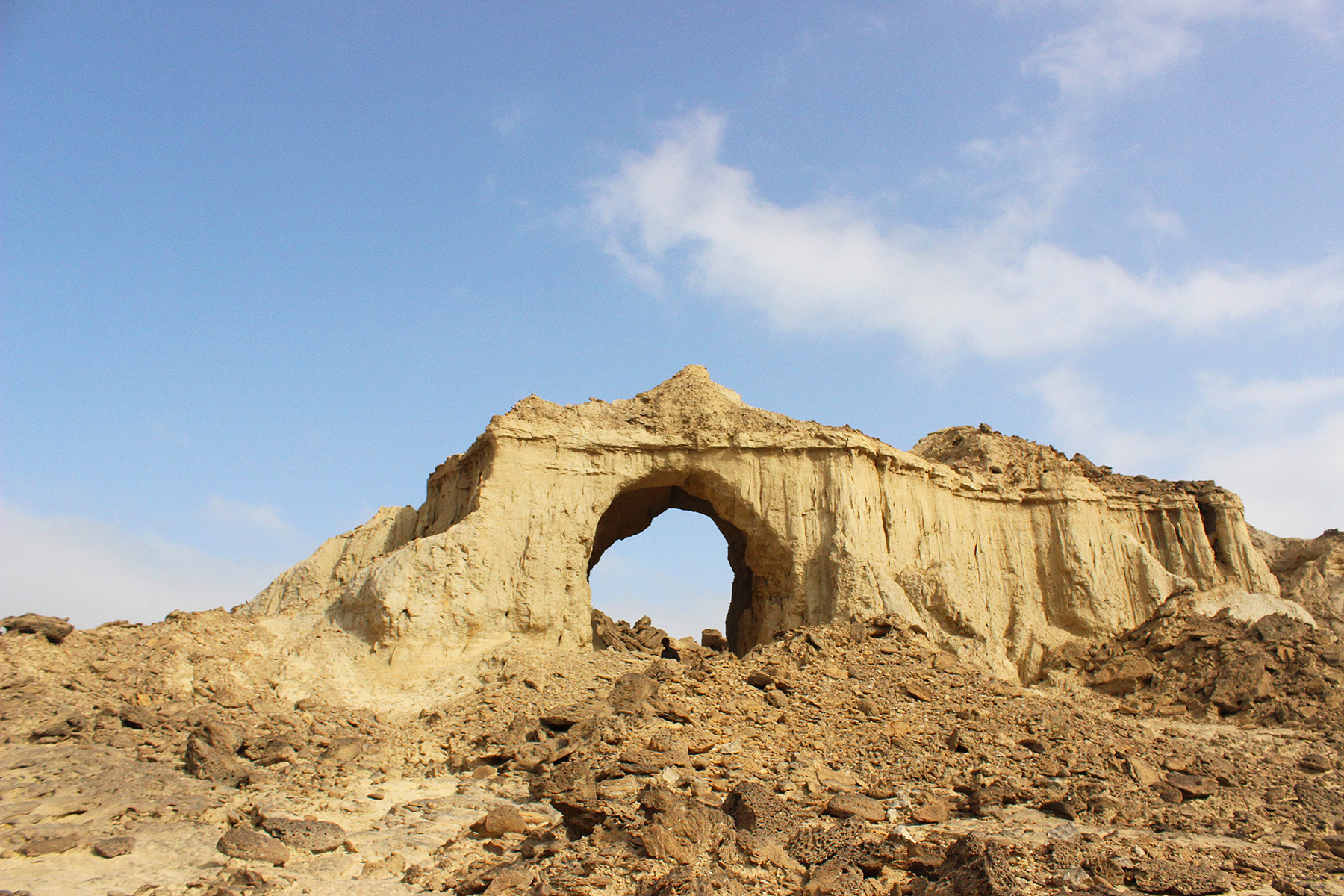Most individuals are charmed by greenery, but some are inverse and find themselves pulled towards harsher landscapes.
“The world is a book and those who do not travel, read only a page.” —St Augustine
For those acclimated to level plains and the smooth feel of plantations and knolls, the scraggy mountains of Balochistan is an extreme change of scenery. But, in this same extremity, lies its exquisite appeal; a merciless excellence that is most obviously manifested through the spring in the middle of a sandy desert, the water spouting out of an infertile mountain and the dark blue ocean which brushes the pebbled shores.
Most individuals are charmed by greenery, but some are inverse and find themselves pulled towards harsher landscapes. I am no different.
I chose to visit Balochistan to explore the rocky, sandy terrain that is the Hingol National Park. Everyone on my friends list cautioned me against going there alone. 'It's not safe!'
I did manage to find three travelling buddies, and almost immediately, the four of us headed towards the Makran Coastal Highway.
As soon as we crossed Sindh, the sights drastically changed. Miles and miles of sand stretched out on both sides of the road. We journeyed for 80km with no sight of a building, not one! Then, mountains began to show up, and how!
We halted at different places to take pictures. At one place, there was this burrow-looking hollow at the highest point of a mountain. We decided to trek to the top. The stones on these mountains turned out to be pretty slippery. At the top of the mountain, we were welcomed by a lovely man-made pass. While I was clicking away, somebody from, what appeared to be inside the mountain, began to holler at us:
"This is not an excursion spot, we are living here with our families."
We apologised and hurriedly left.
Our car was hurtling forward on the smooth road at 100km/hour. It was a workday, so hardly any explorers were in sight. All around us was, the peace and calm challenged by the over-hyped security concerns that are usually trumpeted about this gorgeous province.
On the way, I met regular people in their little shops; they were all pleasant and welcoming. Each local we stopped to talk to, had a smile on their faces. We crossed a few check-posts, where they checked our car and documents, and let us go.
The first stop on our itinerary was Nani Mandir, the most popular spot in Hingol district.
In transit to Nani Mandir was a little mosque, named the Mohammad Bin Qasim mosque, in light of the fact that he entered Sindh at this very point, with his armed forces. There were also the graves of his warriors on one of the mountains.
When we arrived at Nani Mandir, the first thing we noticed were the tiny, colourful bits of cloth tied to the trees, each standing for a wish that a visitor prayed to be fulfilled.
Hinglaj Mata (the other name for Nani Mandir) is a Hindu sanctuary in Hinglaj, a town on the Makran coast in the Lasbela locale of Balochistan. It is the centre of the Hingol National Park.
This sanctuary is situated in an old hollow. It is a warm place where a huge number of Hindus from territories come to perform pilgrimage (Utam Yatra) for four days. When we talked with the monk, Mr Gopal Gree, he shared some fascinating information with us. According to him:
"This sanctuary is 2.5 million years old. Hinglaj Mata (goddess of Hinglaj) was sent by god to free the state from the fear of Hingol son of Vichitra. She took Hingol to the cave and executed him. Before his demise, Hingol prayed for peache and asked the goddess to name the region after him, so now the whole zone is known as Hingol."
The sanctuary is venerated by Hindus, as well as Muslim Sufis. Gree told us, "Shah Abdul Latif Bhittai also came to this sanctuary once. Shah Latif called Devi by the name of 'Nani Maa' (grandmother). That gave the place the name 'Nani Mandir'. On his call, the Hinglaj Devi statue would begin to respond and sit and drink milk from his hands."
The temple is surrounded with mountains, running by the side is the Hingol stream. The gatekeeper warned us that there were crocodiles and wild creatures here. But for as long as we trekked around, we didn't find anything. Perhaps, the dry, hot season had forced the creatures away.
From Nani Mandir, we proceeded to the Kund Malir beach, where the delightfully blue waters drained all our fatigue. There was a small lodging for stay, and an eatery from where we had lunch. Then, we ran right over the white sands and jumped into the dark blue ocean.
After a while, we proceeded with our excursion to investigate the Princess of Hope, which was named so by Hollywood celebrity, Angelina Jolie, on her visit to Balochistan. Accompanying the princess was the sphinx-like structure. It was a wonderful spot, and with that came an end to our adventure in Balochistan.
Balochistan is a vastly unexplored region. In the past, it was home to crocodiles, exotic birds, panthers and other wildlife. Many of these are said to still be there, though we didn't spot any in Hingol.
Be that as it may, this province is a must-see! You can feel life return here, with the region holding out its arms wide open to welcome voyagers.
—All photos by author
Hammad Shakil is a photographer and travel guide operating his tour company The Josh Tours.
Follow him on Instagram @hammad.shakil





























